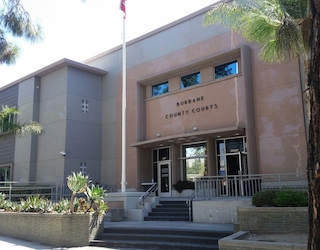The following article is intended to assist defendant in arguing that at the preliminary hearing, insufficient evidence was presented to support the continued maintenance of the case or specific charges, or a sentencing enhancement allegation (i.e. for great bodily injury, for gang enhancement, etc.).
The Gist of This Article: Arguing insufficient evidence was produced at a preliminary hearing is a tough thing to do and judges seem inclined to disagree with such arguments. However, if absolutely no evidence was presented, a judge has a tough time disagreeing with this. The key to a credible argument otherwise is to frame the argument in terms of the elements of the crime as stated in the Penal Code and the jury instructions and point out where the prosecution failed to show evidence of a required part of the crime.
First and foremost, it is important to direct the judge’s attention to which charge or sentencing enhancement was not supported by sufficient evidence and then describe to the judge what evidence in support of the charge(s) or enhancement(s), if any, was presented, but why it is insufficient. The best argument obviously is that no evidence was presented at the preliminary hearing in support of one of the charge(s) or enhancement(s) and therefore, the Penal Code § 995 motion should therefore be granted on that count. People v. Pitts (1990) 223 Cal.App.3d 606; Somers v. Superior Court (1973) 32 Cal.App.3d 961.
Otherwise, defendant’s argument commonly is that there is insufficient evidence for an element of a crime or enhancement allegation. First, a few “easy” grounds for a 995 motion. For example, a 995 motion should be granted if there was no evidence showing the use of a firearm to further the underlying crime in a case alleging the Penal Code § 12022.5 enhancement. Alvarado v. Superior Court (2007) 146 Cal.App.4th 993, 1000. Similarly, if the prosecution fails to show that defendant had a prior felony conviction in an ex-felon with a firearm case, the charge should be dismissed on a 995 motion. Levy v. Superior Court (1973) 31 Cal.App.3d 427. In an automobile burglary case, a 995 motion would be solid if the prosecution failed to establish that the car doors were locked. People v. Woods (1980) 112 Cal.App.3d 226.
 Burbank Courthouse
Burbank Courthouse
In a murder case, a 995 motion would be proper to dismiss the murder charge if the prosecution failed to present evidence or sufficient evidence of malice aforethought. People v. Caffero (1989) 207 Cal.App.3d 678.
Second, here are a few grounds where the prosecution fails to show defendant’s mental state that is a big part of the crime. In a hit-and-run case, the charge is subject to a 995 motion if the prosecution fails to present any evidence or sufficient evidence that defendant had knowledge of injury to another. Garabedian v. Superior Court (1963) 59 Cal.2d 124. Similarly, in a possession of drugs for sale case, a 995 motion should succeed if the prosecution failed to present evidence of defendant’s intention to sell drugs. People v. Upton (1968) 257 Cal.App.2d 677.
Likewise, in a robbery case, the prosecution must present evidence of intent to steal at the time of the taking, or else the charge is vulnerable to dismissal in a 995 motion. Rodriguez v. Superior Court (1984) 159 Cal.App.3d 821. Last, in a drug possession case, it is required that the prosecution show defendant had dominion and control of the drugs. Pinizzotto v. Superior Court (1968) 257 Cal.App.2d 582, 588, People v. Monson (1967) 255 Cal.App.2d 689, 692.
Third, often there are more subtle grounds for a 995 motion. In a forgery case, a 995 motion would be proper if the prosecution failed to introduce evidence of a trick or fraud.
People v. Looney (2004) 125 Cal.App.4th 242. In a case alleging defendant committed a certain crime as a member of a gang, the prosecution must establish the existence of the gang and that the crime benefited the gang or else the gang enhancement is subject to dismissal in a 995 motion.
People v. Ramirez (2016) 244 Cal.App.4th 800; see also
Salazar v. Superior Court (2000) 83 Cal.App.4th 840 (existence of a gang for gang enhancement). In such cases, in our experience, the prosecutor usually uses a police officer who is designated as a purported “gang expert.”
For more information about preliminary hearing issues, please click on the following articles:
- What Is a Preliminary Hearing?
- What’re Some Affirmative Defenses for a Preliminary Hearing?
- Ten Motions That May Be Made at a Preliminary Hearing
Contact us.  Burbank Courthouse
Burbank Courthouse